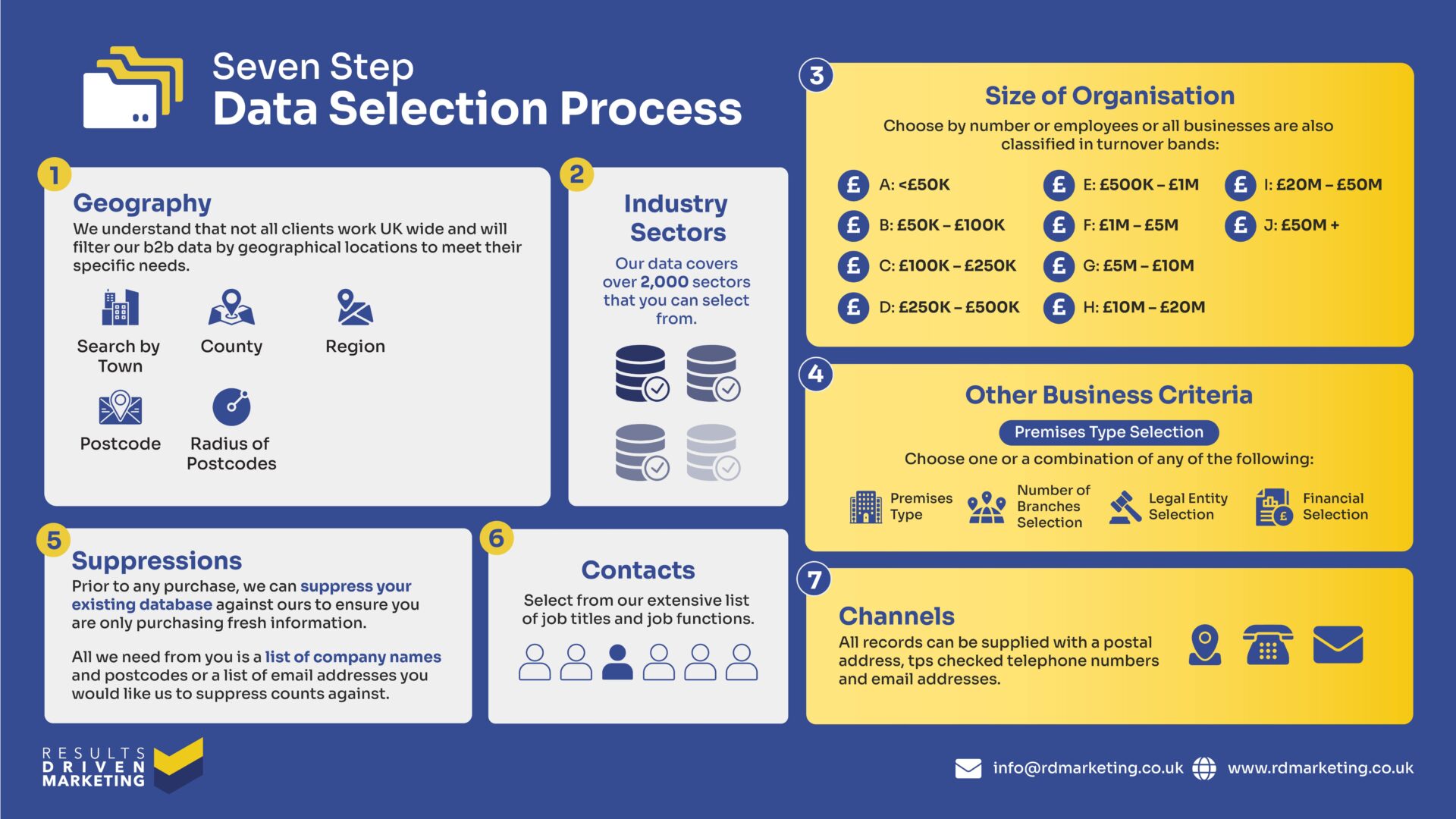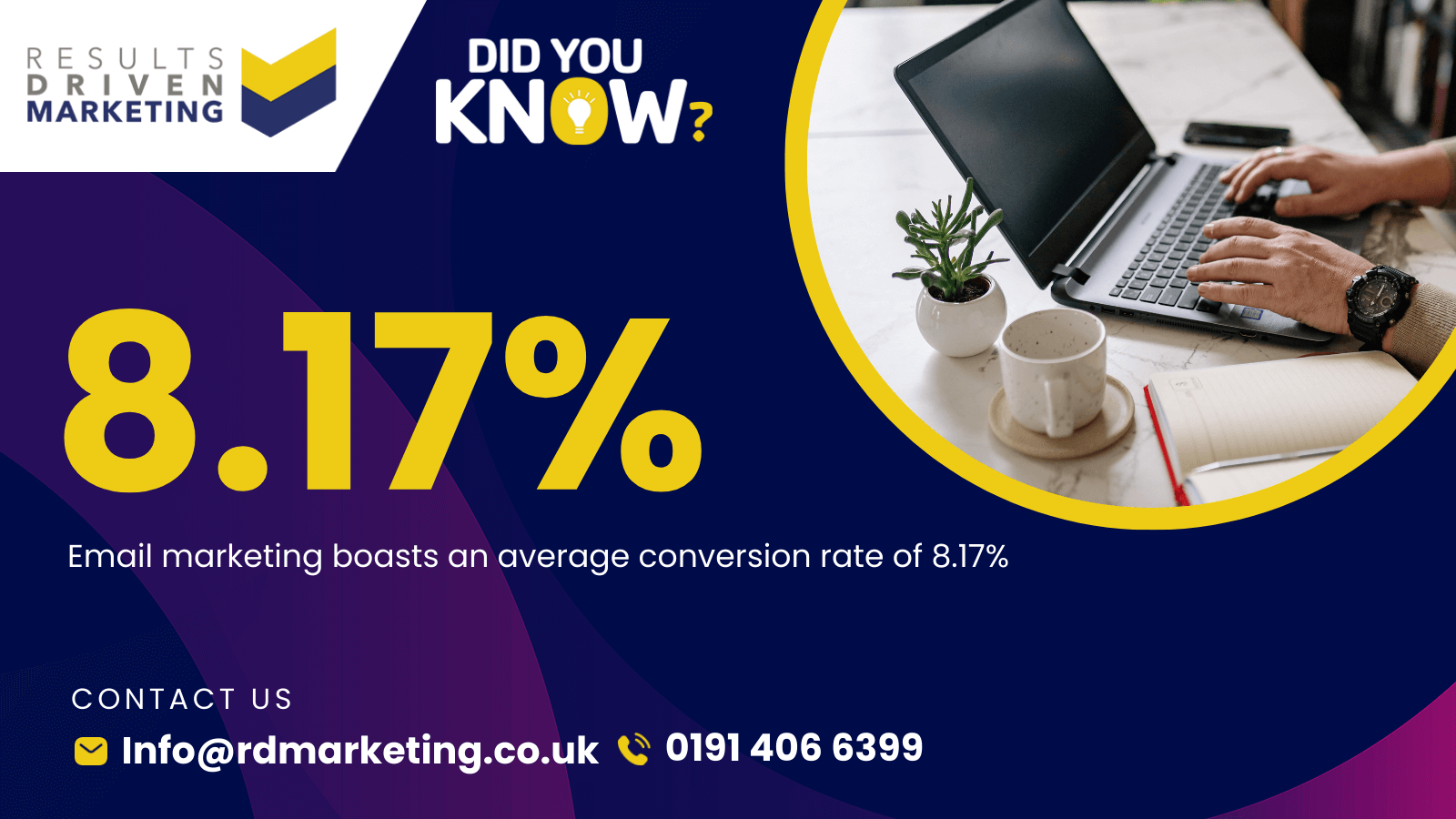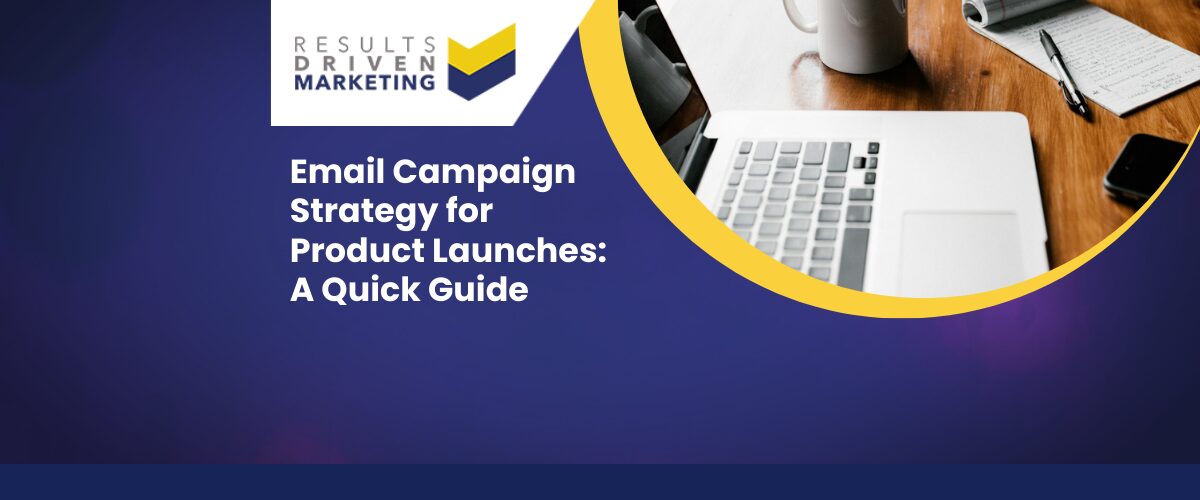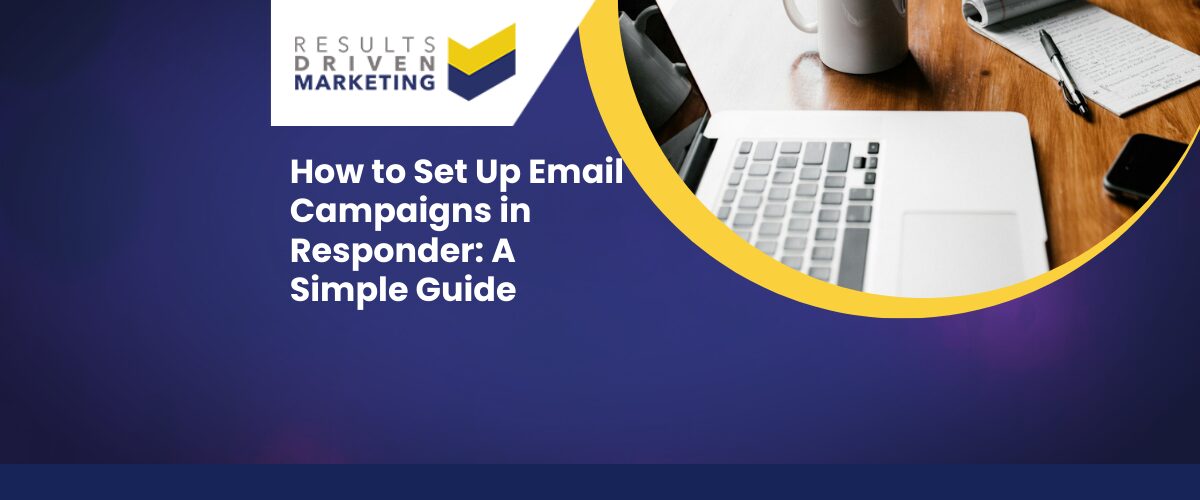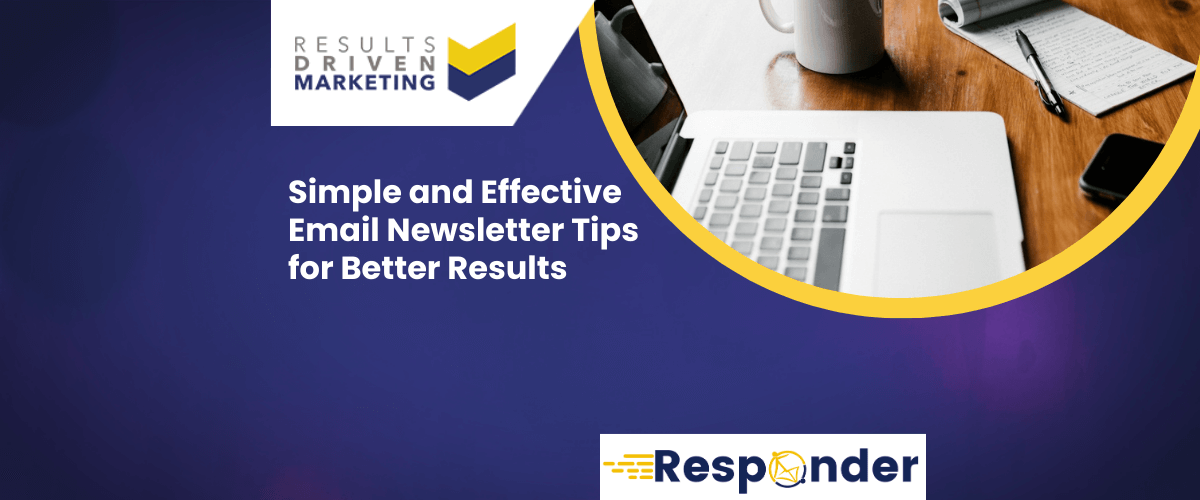
Simple and Effective Email Newsletter Tips for Better Results
Email newsletter tips are more valuable than ever, as email newsletters continue to be one of the most reliable ways to connect with customers, clients, and prospects.
Social media may get a lot of attention, but email newsletters still deliver powerful results, helping businesses reach their audience directly and consistently.
With the right approach, newsletters can boost brand awareness, build loyalty, and increase sales—all without the noise and distractions of other platforms.
One of the biggest advantages of email newsletters is that even small, strategic adjustments can lead to significant improvements in key performance metrics.
And if you’re seeking specialised support or data solutions to enhance your campaigns, check out our B2B Data and Direct Mail Data services for robust, targeted lists tailored to your marketing needs.
Throughout, we’ll also touch on how email marketing management tools and data services, like those offered by RD Marketing, can enhance your approach even further.
Whether you’re looking for Telemarketing Data, a CTPS Checker to stay compliant, or Data Cleansing Services to keep your lists in top shape, we’re here to support your journey.
Table of contents:
Know Your Audience
One of the most critical email newsletter tips for achieving better results is understanding your audience deeply. Knowing your subscribers’ demographics, interests, and behaviors is like unlocking the blueprint to create relevant, personalised content that resonates.
When you take the time to segment your audience based on these factors, you’ll notice higher open rates, more clicks, and, ultimately, greater engagement.
Segmenting Your Audience for Success
Here’s a fact: not every subscriber is the same, and treating them as such can lead to missed opportunities. By segmenting your email list based on key characteristics—like age, location, job role, or purchase history—you can tailor your messaging to suit each group.
For example, if you’re a B2B business, segmenting by industry or company size can help you deliver more targeted content, leading to higher conversion rates.
- Demographics: Age, gender, location, and job role can significantly impact how a subscriber perceives your content. Segmenting based on these basic demographics can make your email newsletters feel more relevant.
- Interests: Use past behavior, such as product interactions or page views, to segment based on interests. Subscribers who clicked on a particular category in past emails may respond better to similar content in the future.
- Behavior: Consider grouping subscribers by their engagement levels. For example, separate highly engaged readers from those who rarely open emails, so you can design re-engagement campaigns for the latter group.
For reliable, segmented lists, our Consumer Data and B2B Data services offer in-depth insights, ensuring that your content reaches the right audience every time.
Gathering Insights to Tailor Content
To effectively tailor your newsletters, gathering insights about your audience is essential. Surveys and polls are great tools to ask subscribers directly about their preferences.
You can place a short, optional survey link in your welcome emails, asking questions like:
- What type of content would you like to see more of?
- How often would you like to receive our emails?
- What topics are you interested in?
Analytics tools like Google Analytics, email marketing software, and customer data platforms can also provide valuable data.
They reveal metrics like click-through rates and content interaction, showing what’s working and where there’s room to improve. By understanding these behaviors, you’ll be better equipped to make strategic adjustments.
For businesses looking to streamline and manage these tasks, Email Marketing Management Services from RD Marketing can provide the tools to gather, analyse, and utilise subscriber data effectively.
Tools and Techniques to Understand Your Subscribers
Using tools to analyse subscriber preferences can enhance your approach. Here are a few proven methods to learn more about what your audience cares about:
Surveys and Polls: Simple, quick, and often very effective. A poll asking readers what kind of content they find valuable or which products interest them most can go a long way.
Behavioral Analytics: Tracking behaviors like open rates, click patterns, and time spent reading emails reveals which content types resonate most.
Data Enrichment Services: Our Data Enrichment Services enhance existing subscriber information, filling in gaps and providing more detailed profiles so you can craft hyper-relevant content.
To put it simply, segmenting your audience, gathering insights, and using advanced analytics tools can make your email marketing efforts far more impactful.
These email newsletter tips enable you to speak directly to what your audience values, creating a tailored, engaging experience for every subscriber.
Craft Catchy Subject Lines and Preheader Texts
When it comes to email newsletters, subject lines and preheader texts are like your first impression. They’re the hook that determines whether your audience opens the email or scrolls past it. Crafting subject lines that capture attention is one of the most effective email newsletter tips you can implement to improve open rates and engagement.
Why Subject Lines and Preheaders Matter
A subject line is the first thing a recipient sees, and in a crowded inbox, you’ve only got a few words to stand out. A catchy, intriguing, or value-driven subject line can make all the difference.
A preheader text, which is the snippet of text that follows the subject line, offers an additional space to entice the reader further. Together, these elements set the tone for your email and make readers curious enough to click.
Consider these strategies when writing your subject lines and preheaders:
Spark Curiosity: Piquing interest without giving too much away is a classic way to boost open rates. Subject lines like “Are You Missing Out on This?” or “Unlock Your Exclusive Offer Today” can create curiosity.
Convey Urgency: A time-sensitive subject line can drive immediate action. Phrases like “Last Chance to Save” or “Only a Few Spots Left!” encourage recipients to act fast.
Offer Clear Value: Clearly state the benefit of opening the email, like “Boost Your Engagement with These Simple Email Tips” or “Your Guide to Smarter Marketing Strategies.”
To get a comprehensive list of potential recipients who would benefit from this approach, consider our Email Address List Data or International Email List for precise targeting across different markets.
A/B Testing for Best Results
If you’re looking for email newsletter tips that will continually improve your results, A/B testing should be part of your strategy. A/B testing, also known as split testing, allows you to experiment with different subject lines to determine what resonates most with your audience.
For example, you can send two variations of a subject line to a small portion of your email list, then choose the one with the higher open rate to send to the rest of your audience.
Some A/B testing ideas include:
- Different Emotions: Test subject lines that evoke curiosity versus urgency. For instance, “Discover Your Secret Advantage” vs. “Only a Few Days Left to Act!”
- Personalisation: Experiment with including the recipient’s name or location, like “John, These Tips Are Just for You” or “Boost Your Engagement, UK-Style.”
- Tone: Try a more formal subject line against a friendly, conversational one, such as “Expert Tips for Email Success” vs. “Want Simple Tips for Better Results?”
For high-quality data that supports accurate segmentation, check out Data Enrichment Services, which can give you deeper insights for even more effective A/B testing.
Examples of Effective Subject Lines
Creating attention-grabbing subject lines doesn’t have to be complicated. Here are a few examples to spark inspiration:
- “Don’t Miss Out: Simple Email Tips That Work”
- “Increase Your Open Rates with These 5 Tips”
- “Unlock Our Exclusive Guide to Better Engagement”
- “Ready to Boost Your Email Strategy? Start Here!”
Using these subject lines, along with carefully tested preheader texts, will set a strong foundation for your emails.
Remember, even small tweaks can yield significant results, helping you connect more effectively with your audience. And with tools like our Email Marketing Management Services, you’ll be able to track the performance of each subject line and optimise as you go.
Incorporating these email newsletter tips around subject lines and preheaders can make a lasting impact, keeping your messages at the top of your subscribers’ minds and, most importantly, out of their spam folders.
Focus on Design and Readability
In the world of email marketing, first impressions truly matter, and one of the most straightforward email newsletter tips to boost engagement is to focus on design and readability.
When your newsletter is visually appealing, easy to read, and looks great on both mobile devices and desktops, subscribers are more likely to engage with your content, explore links, and even take action.
The Power of Simple, Clean, and Mobile-Responsive Design
A clean and simple design not only looks professional but also enhances readability. Complex layouts and excessive graphics can distract readers or slow down load times, especially on mobile devices.
Keeping the design straightforward allows your message to shine and prevents subscribers from getting overwhelmed or disinterested.
To achieve a clean design:
- Use ample white space: This makes your content easier to read and navigate, keeping the reader’s attention on the core message.
- Limit colors: Stick to a cohesive color scheme that aligns with your brand without overloading the reader. Aim for two to three colors that work harmoniously.
- Avoid clutter: Too many images, fonts, or sections can make your email appear chaotic. Organise your content neatly, and let each section have its own clear space.
If you’re looking to reach a targeted audience with relevant, responsive email designs, our Direct Mail Data and Telemarketing Data services provide valuable lists for businesses aiming to boost engagement.
Choosing the Right Fonts, Images, and Colors
Design isn’t just about layout; it also includes elements like fonts, images, and colors that subtly influence how your email is perceived. Here’s a breakdown of each:
Fonts: Stick to clear, legible fonts. Sans-serif fonts like Arial or Helvetica are often ideal for screens as they’re easy to read. Avoid using more than two different fonts in one newsletter, as consistency enhances professionalism and readability.
Images: Images should enhance, not overwhelm, the content. Choose high-quality visuals that align with your message, but keep file sizes small to avoid slowing down load times. And don’t forget to use alt text for accessibility, ensuring that readers who can’t view images still understand the content.
Color Schemes: Choose colors that fit your brand and convey the right emotion. Blues often signal trust, while greens can be calming or related to growth. A balanced approach to color use will keep your newsletter visually appealing without overshadowing the main message.
By using Email Marketing Management Services, you can easily test different design elements, fonts, and colors to see what resonates best with your audience.
Optimising for Mobile and Desktop
With more people reading emails on mobile than ever, optimising your newsletter for both mobile devices and desktops is crucial. A mobile-friendly design means readers can engage with your content anywhere, anytime, increasing the chances they’ll act on your call-to-action.
Here are some email newsletter tips for mobile optimisation:
- Responsive Templates: Use templates that automatically adjust to the screen size, ensuring content looks great whether it’s viewed on a phone, tablet, or computer.
- Shorter Subject Lines: Since mobile screens show fewer characters, keeping subject lines concise ensures the most important words appear without getting cut off.
- Clickable Buttons: Make sure buttons are large enough to tap easily on a mobile screen, reducing frustration for users trying to click through.
For more targeted, mobile-friendly campaigns, consider our International Email List, which provides global reach with local insights, enabling you to tailor messages for international audiences across various devices.
Personalisation and Customisation
One of the most impactful email newsletter tips for boosting engagement is personalisation. In an age where customers expect more tailored experiences, generic emails often go unnoticed.
By leveraging data to customise content—whether it’s by using the subscriber’s name, preferences, or even purchase history—you create a unique, relevant experience that resonates with each reader.
Using Data to Personalise Content
Personalisation starts with data, and understanding your audience’s preferences is essential. Imagine opening an email that greets you by name and suggests products based on your past purchases or content that aligns with your interests. .
That level of attention makes a big difference and establishes a stronger connection with subscribers.
Some effective ways to personalise include:
- Greeting by Name: Using a subscriber’s first name in the subject line or greeting can make the email feel more personal and welcoming.
- Tailoring Content by Purchase History: For e-commerce brands, recommending products similar to past purchases or offering exclusive discounts on items left in the cart can boost engagement.
- Interest-Based Segmentation: Group your audience by interests, hobbies, or past interactions to send them content that’s more relevant.
For high-quality, reliable data that powers personalisation, consider our Consumer Data and B2B Data services, designed to help you gain insights that lead to meaningful customisation.
How Customised Content Increases Engagement
Customised content shows readers that you truly understand their needs and preferences, which ultimately improves engagement.
When readers receive information that aligns with their interests, they’re more likely to open, read, and click through your emails. Here are a few key email newsletter tips on how to use customised content effectively:
- Create Targeted Offers: Tailor promotions based on the specific needs of each segment, whether it’s offering a first-time customer discount or a loyalty reward for repeat buyers.
- Segment by Behavior: For instance, send one group of subscribers product updates while another receives educational content, depending on what they’ve shown interest in before.
Using Data Enrichment Services can enhance your existing subscriber information, making it easier to develop highly customised, targeted campaigns.
With enriched data, your emails can become much more relevant to each reader, increasing the chances of conversion.
Here’s a simple breakdown of how dynamic content and segmentation can elevate your email strategy:
Dynamic Content Blocks: These are sections of your email that change based on the subscriber’s profile. For example, a travel agency could show a different destination based on each subscriber’s location.
Behavior-Based Segmentation: Group your subscribers based on their behavior, such as those who frequently engage with your emails versus those who rarely open them. This segmentation allows you to send re-engagement campaigns to lapsed subscribers or exclusive content to loyal readers.
A/B Testing with Segments: Run tests on different types of dynamic content to understand what resonates best with each group.
For optimal results, using tools like our Email Marketing Management Services can streamline dynamic content insertion, letting you easily manage segmented lists and tailor content accordingly.
And, to ensure your lists are accurate and up-to-date, our Data Cleansing Services can help remove outdated information, keeping your segmentation effective.
Clear Call-to-Action (CTA) Placement
A well-placed, single, clear call-to-action (CTA) can make or break the effectiveness of an email newsletter. Among essential email newsletter tips, ensuring a prominent and purposeful CTA is crucial to drive the actions you want your readers to take, whether that’s signing up, making a purchase, or reading more.
A focused CTA helps streamline the reader’s journey and ensures they’re not overwhelmed with choices.
Why a Single, Clear CTA Matters
When a subscriber opens an email, having too many actions to choose from can lead to indecision or, worse, inaction.
A single, clear CTA aligns the email with one purpose, reducing confusion and making it easy for readers to take the next step. Each email should have a main goal, and the CTA should directly support that goal. For example:
- A promotional email may have a CTA like “Shop Now” or “View Today’s Deals.”
- An informational newsletter might encourage readers with “Read More” or “Explore Our Guide.”
- For new services or resources, “Get Started” or “Discover More” works well.
If you’re looking to drive specific results with clear, targeted actions, our Telemarketing Data and Email Address List Data services provide the segmented lists you need to connect with the right audience effectively.
Positioning Your CTA for Maximum Visibility
Once you’ve crafted a strong, purpose-driven CTA, where you place it within the email is equally important. Positioning directly impacts how noticeable and accessible the CTA is. Here are a few placement tips:
Top of the Email: Placing the CTA near the top makes it instantly visible, capturing attention before the reader scrolls.
Mid-Email for Longer Content: For emails with more content, positioning the CTA in the middle can increase engagement as readers become invested in the message.
End of the Email: For those who read through the entire email, a CTA at the end is a natural next step, allowing them to continue the journey you’ve laid out.
Button Size and Color: Make the CTA stand out by using a contrasting color and button style. Larger, bold buttons catch the eye and make the action clear.
Using Data Enrichment Services helps ensure you understand each segment’s preferences, allowing you to design and position CTAs in a way that matches their reading habits.
Testing CTA Language for Better Click-Through Rates
To maximise click-through rates, experiment with the language of your CTA. Small changes in wording can have a significant impact on engagement. A/B testing different CTA options will help you determine what resonates best with your audience.
Here are some examples of action-oriented language that can encourage clicks:
- “Learn More”: Ideal for educational content or guides, offering readers a chance to dive deeper.
- “Get Started”: Great for new product or service launches, inviting readers to take the first step.
- “Unlock Your Offer”: Works well for exclusive promotions, appealing to those looking for special deals.
- “Shop Now”: A classic for retail emails, it clearly prompts an immediate shopping experience.
With Email Marketing Management Services, you can easily test and optimise CTA language and positioning to find what drives the highest engagement for your audience.
Using Action-Oriented Language in CTAs
Action-oriented language is key to creating urgency and guiding readers. Phrases like “Don’t Miss Out” or “Limited Time Offer” add a sense of urgency that encourages immediate action. Whether your CTA is “Get Your Free Trial” or “Browse Our Collection,” each phrase should clearly direct the reader to the desired action.
For targeted campaigns that rely on clean and accurate data, consider our Data Cleansing Services to maintain up-to-date contact lists, ensuring your CTA reaches the right people at the right time.
Analyse and Optimise Performance
One of the most valuable email newsletter tips for continuous improvement is to consistently analyse and optimise performance.
Tracking key metrics and using data-driven insights can reveal what works and what doesn’t, allowing you to refine your approach and make each newsletter more effective than the last.
By leveraging analytics, you can identify strengths and areas for improvement, ensuring your campaigns evolve with your audience’s needs.
Key Metrics to Track
To understand how your email newsletters are performing, focus on these core metrics:
Open Rate: This is the percentage of recipients who open your email. A low open rate may indicate that subject lines need improvement or that emails are not reaching the inbox effectively.
Click-Through Rate (CTR): This shows the percentage of recipients who click on a link within the email. A strong CTR signals that your content and CTAs are engaging; a lower rate may suggest the need for more relevant or compelling content.
Conversion Rate: This metric reflects the percentage of readers who take a desired action after clicking through, whether it’s making a purchase, signing up, or downloading a resource. Monitoring conversions helps assess the effectiveness of your calls-to-action.
Unsubscribe Rate: If subscribers are opting out frequently, it could indicate that your content isn’t resonating with them. High unsubscribe rates are often a sign to re-evaluate content relevance or email frequency.
Bounce Rate: This is the percentage of emails that couldn’t be delivered to recipients. A high bounce rate can harm sender reputation, so it’s essential to clean up your list regularly.
For keeping lists accurate and reducing bounce rates, our Data Cleansing Services ensure that outdated or inactive contacts are removed, helping you maintain a healthy, engaged list.
Conducting A/B Testing for Optimisation
A/B testing, or split testing, is one of the most powerful tools to identify what resonates best with your audience. This technique allows you to test different versions of various elements in your emails, such as subject lines, CTA wording, and even design layouts.
Here’s how to start A/B testing:
- Choose a Single Element to Test: Whether it’s the subject line, CTA button color, or layout style, testing one element at a time provides clear insights. For example, if you’re testing subject lines, send two versions to a small portion of your list and then measure the open rate of each.
- Set a Testing Schedule: Consistency is key. Conduct A/B tests regularly to discover patterns and continually optimise based on what you learn.
- Analyse Results and Implement Changes: After running the test, evaluate which version performed better and apply these findings to future emails. Over time, A/B testing will help refine your approach for maximum impact.
With Email Marketing Management Services, you can seamlessly set up A/B tests and track performance metrics to see which tactics work best with your audience.
Using Analytics to Refine Content and Layout
Once you’ve gathered data from your campaigns, the next step is to use these insights to refine your email content and layout. Here are some email newsletter tips on how to leverage analytics effectively:
Identify High-Performing Content: By reviewing which sections or topics get the most clicks, you can focus on creating more of the content your audience loves. For instance, if articles on industry news receive high engagement, consider including similar updates in future emails.
Adjust Layout Based on Click Patterns: Analysing heatmaps, which show where readers click most, can help you understand the layout that best drives engagement. If readers tend to click more at the top of the email, place your primary CTA there for greater visibility.
Optimise for Different Audiences: Analytics can help you see variations in engagement among different segments. If one audience segment has a higher click-through rate on specific types of content, you can tailor emails accordingly.
For deeper insights into audience segmentation and tailored approaches, our Data Enrichment Services enhance your subscriber profiles, allowing for more personalised and effective email marketing.
Regularly analysing and optimising your email newsletters ensures they remain engaging, relevant, and impactful. By following these email newsletter tips and making data-driven adjustments, you can turn your email campaigns into powerful tools for reaching and converting your audience.
And, as always, if you need compliant and targeted data for these campaigns, our CTPS Checker and International Email List services can provide valuable support in your efforts to optimise performance.
Build and Maintain a Healthy Email List
One of the most fundamental email newsletter tips for success is building and maintaining a high-quality, engaged email list.
A healthy email list not only improves your email deliverability but also helps you engage with the right audience, ultimately driving better results for your campaigns.
From best practices in list building to essential steps for list maintenance, focusing on list health will set the foundation for effective and sustainable email marketing.
Best Practices for List Building
Growing an email list doesn’t mean adding just anyone; quality matters more than quantity. Here are a few effective ways to build a strong, permission-based list:
Opt-Ins: Ensure that everyone on your list has opted in to receive emails. A single or double opt-in process confirms that they’re genuinely interested, leading to higher engagement and fewer unsubscribes.
The double opt-in method, which requires subscribers to confirm their sign-up via email, reduces the chance of adding unengaged contacts and improves list quality.
Lead Magnets: Offer valuable resources—like a free guide, e-book, or discount—in exchange for an email address. When subscribers sign up because of something that genuinely interests them, they’re more likely to engage with your future emails.
Strategic Sign-Up Forms: Place sign-up forms strategically on your website, blog posts, and social media pages. Capturing visitors’ attention at relevant points increases your chances of building a targeted, engaged list.
For businesses looking to reach specific audiences, our B2B Data and Consumer Data services provide targeted lists tailored to your unique requirements, giving you a head start in building quality connections.
Maintaining List Hygiene
Once you’ve built a strong list, it’s essential to maintain it by regularly cleaning inactive or unengaged subscribers.
A clean, active list improves deliverability, helps avoid spam traps, and ensures you’re engaging with subscribers who truly want to hear from you. Here are some tips for effective list hygiene:
- Remove Inactive Subscribers: After a certain period of inactivity (like six months), consider sending a re-engagement campaign. If subscribers don’t respond, it may be best to remove them from your list.
- Avoid Spam Traps: A spam trap is an email address that doesn’t belong to an actual subscriber but is used by email service providers to identify poor list management practices. To avoid spam traps, regularly clean your list and ensure all contacts have opted in.
- Use Data Cleansing Tools: For large lists, manual cleaning can be time-consuming. Using a Data Cleansing Service will help automate the process, ensuring your list stays fresh and free of inactive or erroneous addresses.
If you’re reaching out to new audiences, consider services like our Direct Mail Data and Telemarketing Data for high-quality, targeted lists to support fresh campaigns.
Providing an Unsubscribe Option
A respectful and trustworthy relationship with your subscribers starts with transparency, and a clear unsubscribe option is a crucial part of that.
Providing an easy way for subscribers to opt out of your emails not only complies with regulations but also shows respect for their preferences, which helps maintain your sender reputation and overall list quality.
A few best practices for your unsubscribe option:
- Make It Easy to Find: Place the unsubscribe link prominently at the bottom of your emails, where readers can easily spot it.
- Use Simple Language: “Unsubscribe” or “Manage Your Preferences” is straightforward and clear.
- Allow Preference Changes: Sometimes, subscribers may not want to unsubscribe entirely but would prefer fewer emails. Offering a “Manage Preferences” option gives them control over frequency and types of emails they receive.
For businesses managing large, complex lists, Email Marketing Management Services can help track subscriber preferences and engagement, allowing you to adjust your approach based on each reader’s interests.
Building and maintaining a healthy email list isn’t just about growing numbers; it’s about creating a base of engaged subscribers who find value in your content.
By following these email newsletter tips, focusing on list hygiene, and respecting subscribers’ choices, you’ll foster a high-quality list that supports sustainable, effective email marketing.
Stay Compliant and Respect Privacy
Tips to Ensure Newsletters Respect Privacy
Here are some quick and effective email newsletter tips to help keep your newsletters in line with privacy regulations:
Use Opt-In Forms: Always use opt-in forms to collect subscribers’ emails. Double opt-ins, where subscribers confirm their subscription via a follow-up email, can provide additional protection and reinforce consent.
Include a Clear Unsubscribe Option: Every email should have an easy-to-find unsubscribe link, allowing subscribers to opt out at any time. This is not only a legal requirement but also demonstrates respect for subscriber preferences.
Only Collect Necessary Data: When requesting information, keep it minimal. Collect only what’s essential for your marketing goals to avoid unnecessary data storage. The less data you have, the easier it is to maintain privacy.
State Your Privacy Policy: Provide a clear link to your privacy policy on your opt-in forms and in your emails. Let subscribers know how their information will be used and reassure them that their data is secure.
To help with managing permissions and preferences across various segments, consider our Email Marketing Management Services. This tool enables you to track subscriber data, manage preferences, and ensure compliance.
Be Transparent About Data Collection and Usage
Transparency is key to earning and keeping subscribers’ trust. Being upfront about data collection and how their information will be used reassures subscribers, making them more comfortable engaging with your emails. Consider the following email newsletter tips for promoting transparency:
- Explain Why You’re Collecting Data: If you’re asking for information beyond an email address, explain why. For example, tell subscribers that knowing their industry helps you provide more relevant content.
- Give Control Over Preferences: Offer a preference center where subscribers can choose the types of emails they want to receive and adjust the frequency. Empowering subscribers with control over their experience fosters trust and reduces the likelihood of unsubscribes.
For data-intensive campaigns that need additional security, our Data Enrichment Services ensure your data is accurate and enriched, allowing you to communicate transparently and effectively.
By following these email newsletter tips for compliance and respecting privacy, you’ll not only avoid legal pitfalls but also build stronger, more trusting relationships with your subscribers.
Compliance shows professionalism, and privacy-conscious subscribers are more likely to engage with brands they feel are responsible with their data.
Who are we?
Thinking about “how do I buy data“?
Providing b2b database solutions is our passion.
Offering a consultancy service prior to purchase, our advisors always aim to supply a database that meets your specific marketing needs, exactly.
We also supply email marketing solutions with our email marketing platform and email automation software.
Results Driven Marketing have the best data of email lists for your networking solutions as well as direct mailing lists & telemarketing data in telemarketing lists
We provide data cleansing and data enrichment services to make sure you get the best data quality.
We provide email marketing lists and an international email list for your business needs.
At RDM We provide b2c data as we have connections with the best b2c data brokers.
A good quality b2b database is the heartbeat of any direct marketing campaign…
It makes sense to ensure you have access to the best!
Call us today on 0191 406 6399 to discuss your specific needs.
Results Driven Marketing
0191 406 6399


